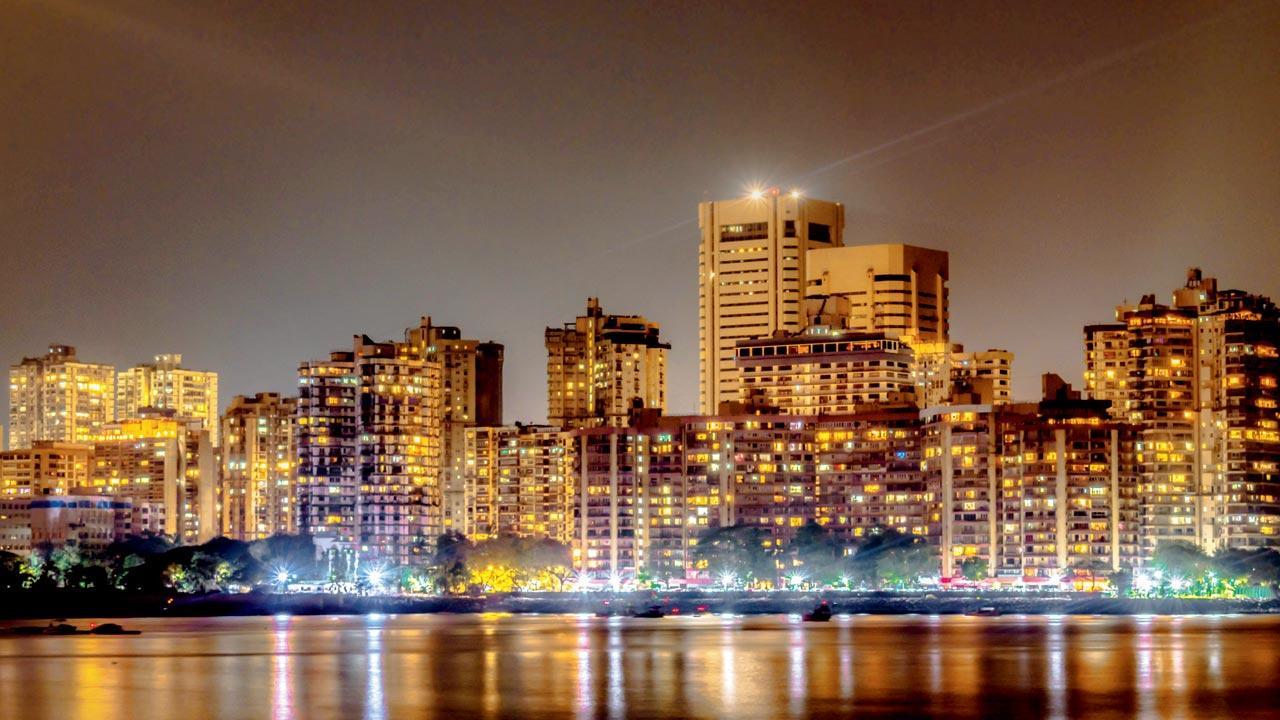Could post-pandemic be a phase when Mumbai’s builders will allow India’s brightest young to embrace this city again?

Here in Mumbai, people move to neighbourhoods —Colaba or Versova, Saki Naka or Chinchpokli—self-sustaining blackholes, very hard to leave. Representation pic
 A real-estate ad is to a middle-aged Mumbai tenant what pornography is to an early teenager—jaw-dropping piece of fantasy; messing with juvenile expectations.
A real-estate ad is to a middle-aged Mumbai tenant what pornography is to an early teenager—jaw-dropping piece of fantasy; messing with juvenile expectations.
ADVERTISEMENT
The massive construction/erection you see, flipping glossy pages of the morning broadsheet in the bathroom—with green landscaping all over, tiny cars maintaining 20-feet social distance on a well-tarred road, is as close to reality as children drawing their first versions of a home. Huge hut, triangular roof, mountains behind, and the sun as big as birds flying around it. It’s a “pictorial representation”.
The interiors of stunning 2/3/4 BHK (“sample flat”) are so Taj/Marriott presidential suite that if you could afford that upholstery, you’d own the building. But there are properties you can’t ignore. After all, this one’s just “15 mins from the closest mall, 20 mins from the railway station, an hour from the airport...”
This is to inform you that if/when you do move in, navigating the gunk outside, the first thing you’d wanna know is how the hell to get outta there anyway! Otherwise, slide your windows, pull the curtain. How does it matter now where you are—Sholapur, Singapore; all the same, no? Unless you inevitably crave a work plus social life.
And with the massive Mumbai, that often depends on where you live. Instead of the city, people move to neighbourhoods—Colaba or Versova, Saki Naka or Chinchpokli—self-sustaining blackholes, harder to exit from, once you’ve made it inside.
I first moved to Chembur, from Delhi, for the same reason that I am Indian—for all the nationalism, it’s not like I had a choice. My parents were already here. Where was Chembur in 2002, when I got here? I’d say, in Pune!
But more practically, “about an hour away”—from everything; Colaba, Versova, Saki Naka, or Chinchpokli. Time of day determining minor lag, here or there. Given one main road, with zero arteries, for an escape route south-wards.
To the north, it’s close to Navi Mumbai, yes. Which is a well-planned city that came up in the early 1970s, designed by Charles Correa.
The purpose, I guess then, was to build a second option for Bombay; only better. Part of the project was for the state government to shift there. Only that people don’t move neighbourhoods, unless moving up—which, in the context of Indian metropolises (Kolkata, Delhi, Bengaluru), is strangely to the south.
That is where Maharashtra politicians and top bureaucrats stayed put, refusing to budge from their official homes—in and around Nariman Point. It’s a trait they share with their traditional, middle-aged neighbours, many of whom have lived with parents, because moving out would decidedly mean stepping down.
Newer migrants, shorn of address snobbery, are free to go wherever they wanna. So, where do they go? They start with digs the size of bathrooms in tonier neighbourhoods (like Bandra), paying rents that leave little for bars/restaurants—getting progressively expensive, thanks to excise/taxes, plus worsening curfew hours—cutting down on a social life still.
In need of at least a larger home, or even a similar size, because the current neighbourhood has been priced out already—they keep shifting further and further north, at a kissing distance of Nashik. For, where else to go?
The future of cities has, of course, everything to do with talents it attracts. Ask any shark-tank from a world of fancy start-ups, over the past decade, where they’d punt to set up shop? Not Mumbai.
The hustle here appears too much to draw in the brightest young anymore. Even the famed, round-the-clock social/party scene hardly exists any longer. Maybe Bengaluru, which has had a metropolis thrust upon it? Kolkata, Chennai, relatively provincial? Delhi, self-admittedly judgmental, aggressive and pompous?
For a woman in India, the comparative anonymity/openness of Mumbai as a social choice is a no-brainer. For the finest, fresh graduates to this city, half of which reside in slums, living itself is a monetary hassle.
Rents go up, because the rich have invested that kinda money to pick up places. I don’t know what their margins are—but the realtor’s is the only Mercedes parked among hatchbacks of tenants in the crappiest buildings!
Gradually, nobody’s buying these properties too. Last checked, 1.09 lakh apartments were unsold, lying vacant. Because no one can afford them. But no one will drop the price. No one lives in them. Creating ghost towns, where only the ‘spirit of Mumbai’ survives. Creating a legit case for the Great Exodus following the Great Resignation, post the pandemic, because nobody will make more either?
The problem and solution lie in the same bed. I survey my neighbourhood—partly for having drooled at a property ad once, and the social media push notifications and phone calls that haven’t stopped since.
Where is Chembur in 2022? An elevated road, always empty (Eastern Express Highway) came up, I suspect, for politicians to access their constituencies, exiting VT (peak South Mumbai) for Chembur, in eight minutes’ flat! As did Santacruz-Chembur Link Road, getting you to Saki Naka in about half the time. Likewise, Bandra East connector, clearing the way for Chinchpokli…
No, this isn’t a real estate ad. It’s pornography. Apartments in the kilometre-radius of mine selling for over R10 crore (being the new lakh). These are Manhattan rates. So are you coming to Mumbai?
Mayank Shekhar attempts to make sense of mass culture. He tweets @mayankw14
Send your feedback to mailbag@mid-day.com
The views expressed in this column are the individual’s and don’t represent those of the paper
 Subscribe today by clicking the link and stay updated with the latest news!" Click here!
Subscribe today by clicking the link and stay updated with the latest news!" Click here!








